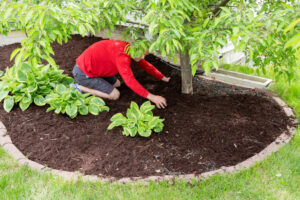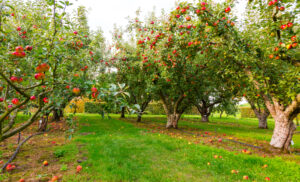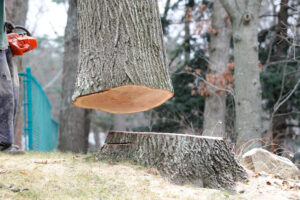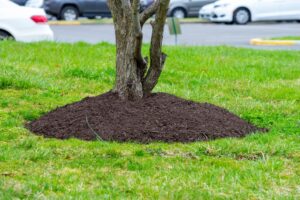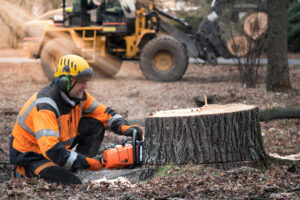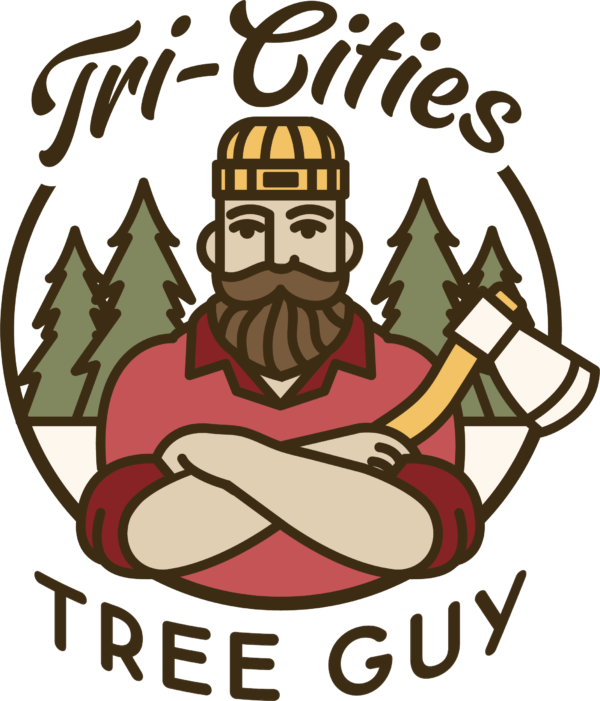Healthy trees are essential for a vibrant and thriving landscape. However, trees are susceptible to various diseases that can affect their appearance, growth, and overall health. In this article, we will discuss the top five most common tree diseases and provide tips on how to identify, treat, and prevent them.
1. Anthracnose
Symptoms
Anthracnose is a fungal disease that affects many tree species, such as dogwoods, sycamores, and oaks. Symptoms include leaf spots, twig dieback, and premature leaf drop. Infected leaves may develop brown, irregular-shaped lesions, often along the veins.
Treatment and Prevention
To treat anthracnose, prune and dispose of infected branches and leaves. Fungicides can also be applied to protect new growth during the wet season. Prevent the disease by promoting tree health with proper watering, fertilization, and mulching. Plant resistant tree species or cultivars if the disease is a common problem in your area.
2. Powdery Mildew
Symptoms
Powdery mildew is a common fungal disease that affects a wide range of trees, including crabapples, oaks, and maples. The disease appears as a white, powdery substance on the leaves, twigs, and buds. Infected leaves may become distorted, yellow, and eventually fall off.
Treatment and Prevention
Treat powdery mildew by pruning affected areas and applying fungicides as needed. Prevent the disease by ensuring proper air circulation around your trees, avoiding overhead watering, and planting resistant tree varieties.
3. Dutch Elm Disease
Symptoms
Dutch elm disease (DED) is a lethal fungal disease that affects elm trees. It is spread by elm bark beetles or through root grafts between neighboring trees. Symptoms include wilting, yellowing leaves, and branch dieback. The disease can kill a mature tree in just a few weeks.
Treatment and Prevention
There is no cure for DED, but prompt removal of infected trees can slow its spread. Preventative measures include injecting healthy trees with fungicides, proper pruning, and planting resistant elm varieties.
4. Oak Wilt
Symptoms
Oak wilt is a deadly fungal disease affecting all species of oak trees. The fungus is transmitted by sap-feeding beetles and through root grafts. Symptoms include wilting, browning leaves, and rapid tree decline. Red oaks are particularly susceptible and can die within weeks, while white oaks may survive for several years.
Treatment and Prevention
There is no cure for oak wilt, but infected trees should be removed and properly disposed of to prevent further spread. Prevent the disease by avoiding pruning during the beetle’s active season, using barriers to disrupt root grafts, and maintaining tree health.
5. Cedar Rust
Symptoms
Cedar rust is a fungal disease affecting eastern red cedars and apple trees. On cedar trees, the disease forms reddish-brown, gelatinous galls that release spores during wet weather. On apple trees, the disease causes bright orange spots on leaves, fruit, and twigs.
Treatment and Prevention
Cedar rust can be controlled by removing galls from cedar trees and applying fungicides to apple trees during the growing season. Prevent the disease by planting resistant apple varieties and maintaining a proper distance between cedar and apple trees.
By being aware of these common tree diseases, you can take proactive measures to maintain the health of your trees and protect them from potential threats. Regular monitoring, proper pruning, and preventative treatments are essential for keeping your trees healthy and vibrant. Consult with a professional arborist if you suspect your tree is suffering from a disease, as they can provide expert advice and care tailored to your specific situation.

